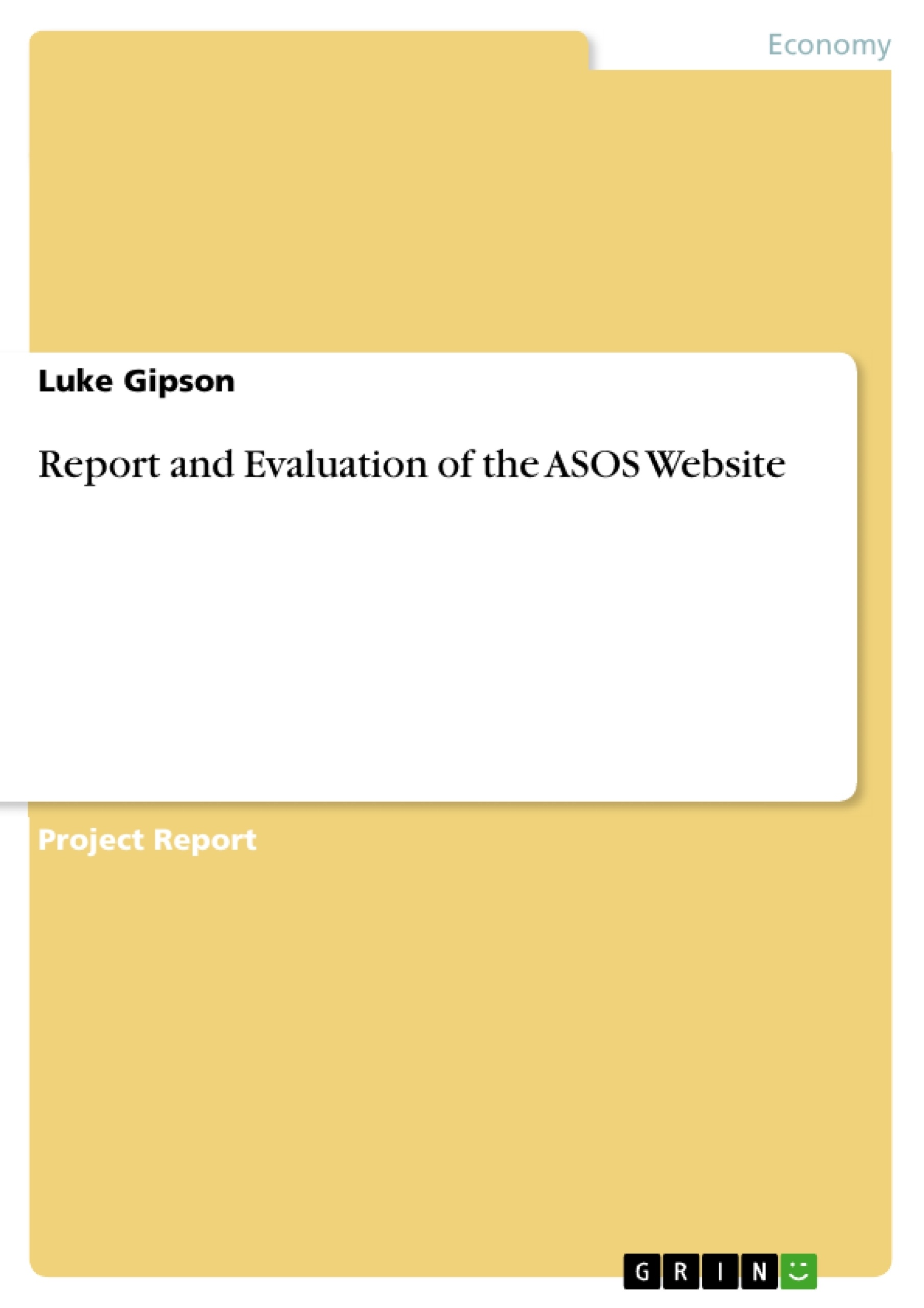ASOS is the largest online fashion website in the UK with 7.1 million customers, the core business activity clothes retail. ASOS is regarded as a global competitor within the online retailing of fashion; a core competence is that ASOS has identified a target market which uses the internet more than any other age. The report analyses the website of ASOS and constructs a series of recommendations using a variety of frameworks and perspectives.
The WebQual 2.0 Method (Barnes & Vidgen, 2001) allows a website to be assessed from the perspective of the customer and highlights that the website attains the highest score of 5 in seven of the twenty-four questions, underling the consistency of the website in delivering an effective user experience. From this it is inferred that the ASOS website is customer-centric, this benefits ASOS from a business perspective, but also in the wider significance as the user experience is enhanced. Based on the WebQual analysis it is evident that ASOS has an excellent website compared to its competition however a long term recommendation for ASOS to continue to developing a sense of community and develop it into a core competency.
The report applies an activity system perspective using the (Amit & Zott, 2001) to rank the NICE forces in significance of value creation for the ASOS website The Lock-In design theme is the most important to the ASOS business model. ASOS must develop its sense of community to encourage engage with its products. The design themes underline that for ASOS to remain the market leader this level of interaction should be enhanced as new technologies emerge. Furthermore the ASOS website is important to the efficiency of the business. In the long term if managed successfully these efficiencies should improve with an increased scale and scope, however ASOS should scenario plan this strategy before engaging.
ASOS’s website is market leading, this is demonstrated by analysis and academic reasoning which supports the design of its website. It’s vital that the ASOS mind-set remains innovative and not become complacent, competition is fierce and fast ASOS must keep up.
Table of Contents
- 1.1 Executive Summary
- 1.2 Outline & Objectives
- 1.3 Choice of Website
- 1.4 Purpose of Website
- 1.5 WebQual 2.0 Table
- 1.6 Website Accessibility
- 1.7 Key Recommendations for ASOS Website
- 1.8 Ranking the Amit and Zott Forces
- 1.9 Key Recommendations for ASOS Website
- 2.0 Conclusions and Key Findings
- References
Objectives and Key Themes
This report aims to analyze the ASOS website, a leading online fashion retailer, and develop recommendations for its continued success. The report utilizes various frameworks and perspectives to evaluate the website's strengths, weaknesses, and opportunities for improvement.
- User experience and customer-centricity
- Website accessibility and inclusivity
- Value creation through activity systems
- Developing a sense of community and engagement
- Maintaining a competitive advantage in the online fashion market
Chapter Summaries
- 1.1 Executive Summary: Provides an overview of ASOS's business model, its target market, and the report's main findings. Highlights the importance of customer-centricity and the need for continuous innovation.
- 1.2 Outline & Objectives: Outlines the structure of the report and its objectives. Introduces the key frameworks and perspectives that will be used to analyze the ASOS website.
- 1.3 Choice of Website: Provides background information on ASOS, including its history, business activities, target market, and key competitive advantages.
- 1.4 Purpose of Website: Explores the importance of the website to ASOS's overall business model and its role in achieving the company's strategic goals.
- 1.5 WebQual 2.0 Table: Applies the WebQual 2.0 method to assess the user experience on the ASOS website. Highlights the website's strengths in delivering a positive customer experience.
- 1.6 Website Accessibility: Evaluates the accessibility of the ASOS website for all users, identifying areas for improvement in ensuring inclusivity.
- 1.7 Key Recommendations for ASOS Website: Combines insights from the WebQual 2.0 analysis and accessibility evaluation to provide recommendations for improving the ASOS website.
- 1.8 Ranking the Amit and Zott Forces: Applies the Amit and Zott framework to analyze the NICE forces (Network, Information, Complementary assets, and Customer) in relation to the ASOS website. Identifies the key forces that contribute to the website's value creation.
- 1.9 Key Recommendations for ASOS Website: Develops recommendations for the ASOS website based on the analysis of the Amit and Zott forces, focusing on preserving and enhancing value for users and creating a competitive advantage.
Keywords
The report focuses on the evaluation of the ASOS website using frameworks such as WebQual 2.0, activity systems, and the Amit and Zott model. Key themes explored include customer experience, website accessibility, value creation, community building, and competitive advantage. The report also examines the role of social computing and user-generated content in the online fashion industry.
- Quote paper
- Luke Gipson (Author), 2014, Report and Evaluation of the ASOS Website, Munich, GRIN Verlag, https://www.grin.com/document/299406




